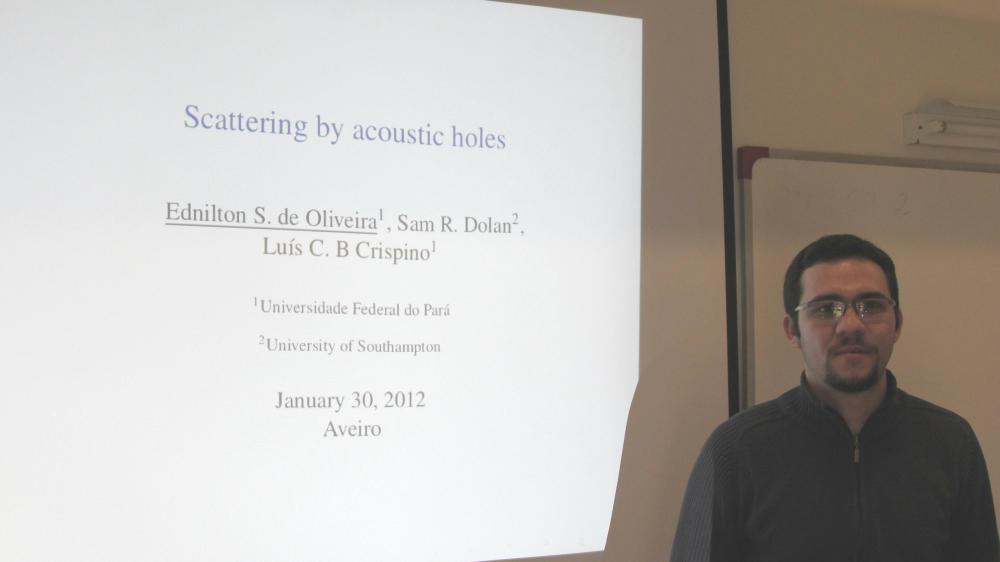Abstract: Wave scattering by black holes is a subject that has received much attention in the 1970s, and has been extensively studied since then. In this presentation we analyze scattering properties of black hole analogues in acoustic systems. Analogues are artificial systems with some of the key properties of black holes that were proposed by Unruh in 1981. Partial wave methods are applied to compute scattering and absorption cross sections for a range of incident wavelengths. We compare our numerical results with semiclassical approximations from geodesic analyzes, and also with results obtained with well known methods from the quantum scattering theory, as the Born approximation, obtaining excellent agreement. We show that acoustic hole scattering shares key features with black hole scattering. For the spherically symmetric acoustic hole, the glory created is approximately 170 times less intense than the glory created by the Schwarzschild black hole, for equivalent horizon-to-wavelength ratios. For the (2+1)-dimensional rotating acoustic hole, we analyze the occurrence of superradiance, manifested as negative partial absorption lengths for corotating modes at low frequencies.
